Matteo Risso
Building Damage Assessment in Conflict Zones: A Deep Learning Approach Using Geospatial Sub-Meter Resolution Data
Oct 07, 2024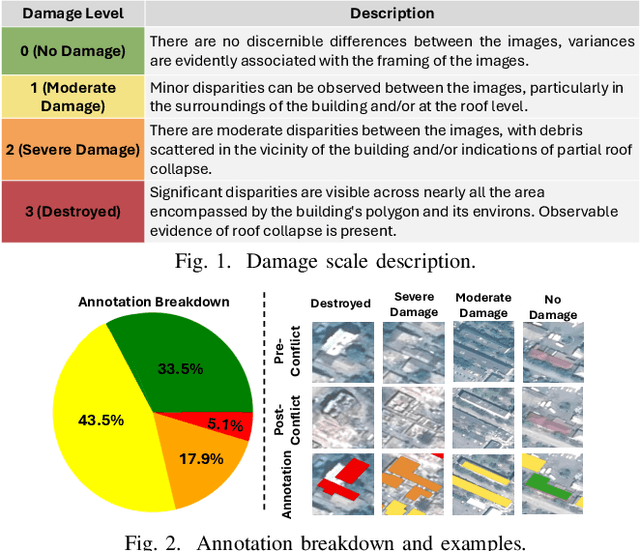

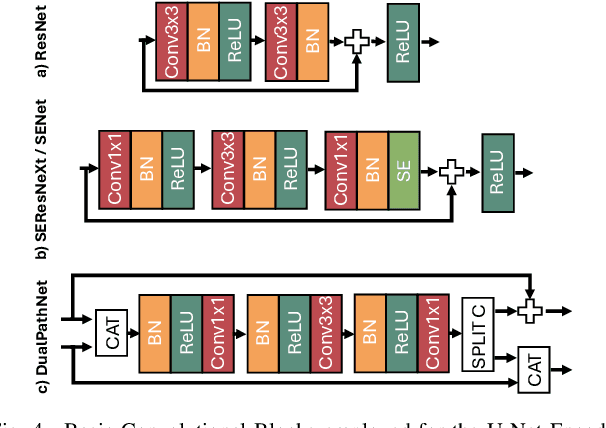
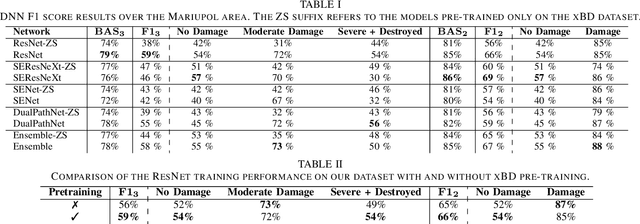
Abstract:Very High Resolution (VHR) geospatial image analysis is crucial for humanitarian assistance in both natural and anthropogenic crises, as it allows to rapidly identify the most critical areas that need support. Nonetheless, manually inspecting large areas is time-consuming and requires domain expertise. Thanks to their accuracy, generalization capabilities, and highly parallelizable workload, Deep Neural Networks (DNNs) provide an excellent way to automate this task. Nevertheless, there is a scarcity of VHR data pertaining to conflict situations, and consequently, of studies on the effectiveness of DNNs in those scenarios. Motivated by this, our work extensively studies the applicability of a collection of state-of-the-art Convolutional Neural Networks (CNNs) originally developed for natural disasters damage assessment in a war scenario. To this end, we build an annotated dataset with pre- and post-conflict images of the Ukrainian city of Mariupol. We then explore the transferability of the CNN models in both zero-shot and learning scenarios, demonstrating their potential and limitations. To the best of our knowledge, this is the first study to use sub-meter resolution imagery to assess building damage in combat zones.
Optimizing DNN Inference on Multi-Accelerator SoCs at Training-time
Sep 27, 2024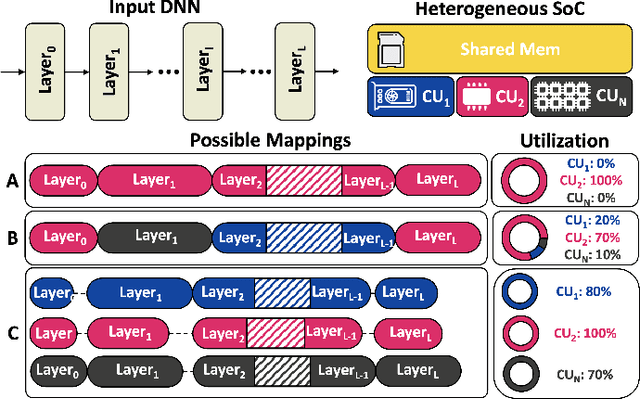
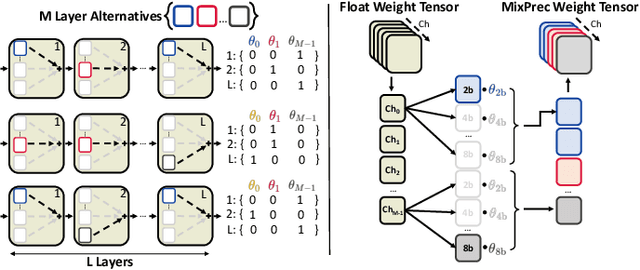
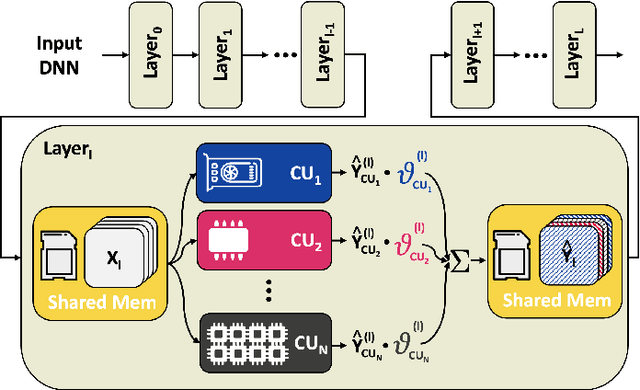

Abstract:The demand for executing Deep Neural Networks (DNNs) with low latency and minimal power consumption at the edge has led to the development of advanced heterogeneous Systems-on-Chips (SoCs) that incorporate multiple specialized computing units (CUs), such as accelerators. Offloading DNN computations to a specific CU from the available set often exposes accuracy vs efficiency trade-offs, due to differences in their supported operations (e.g., standard vs. depthwise convolution) or data representations (e.g., more/less aggressively quantized). A challenging yet unresolved issue is how to map a DNN onto these multi-CU systems to maximally exploit the parallelization possibilities while taking accuracy into account. To address this problem, we present ODiMO, a hardware-aware tool that efficiently explores fine-grain mapping of DNNs among various on-chip CUs, during the training phase. ODiMO strategically splits individual layers of the neural network and executes them in parallel on the multiple available CUs, aiming to balance the total inference energy consumption or latency with the resulting accuracy, impacted by the unique features of the different hardware units. We test our approach on CIFAR-10, CIFAR-100, and ImageNet, targeting two open-source heterogeneous SoCs, i.e., DIANA and Darkside. We obtain a rich collection of Pareto-optimal networks in the accuracy vs. energy or latency space. We show that ODiMO reduces the latency of a DNN executed on the Darkside SoC by up to 8x at iso-accuracy, compared to manual heuristic mappings. When targeting energy, on the same SoC, ODiMO produced up to 50.8x more efficient mappings, with minimal accuracy drop (< 0.3%).
Joint Pruning and Channel-wise Mixed-Precision Quantization for Efficient Deep Neural Networks
Jul 01, 2024Abstract:The resource requirements of deep neural networks (DNNs) pose significant challenges to their deployment on edge devices. Common approaches to address this issue are pruning and mixed-precision quantization, which lead to latency and memory occupation improvements. These optimization techniques are usually applied independently. We propose a novel methodology to apply them jointly via a lightweight gradient-based search, and in a hardware-aware manner, greatly reducing the time required to generate Pareto-optimal DNNs in terms of accuracy versus cost (i.e., latency or memory). We test our approach on three edge-relevant benchmarks, namely CIFAR-10, Google Speech Commands, and Tiny ImageNet. When targeting the optimization of the memory footprint, we are able to achieve a size reduction of 47.50% and 69.54% at iso-accuracy with the baseline networks with all weights quantized at 8 and 2-bit, respectively. Our method surpasses a previous state-of-the-art approach with up to 56.17% size reduction at iso-accuracy. With respect to the sequential application of state-of-the-art pruning and mixed-precision optimizations, we obtain comparable or superior results, but with a significantly lowered training time. In addition, we show how well-tailored cost models can improve the cost versus accuracy trade-offs when targeting specific hardware for deployment.
Optimized Deployment of Deep Neural Networks for Visual Pose Estimation on Nano-drones
Feb 23, 2024Abstract:Miniaturized autonomous unmanned aerial vehicles (UAVs) are gaining popularity due to their small size, enabling new tasks such as indoor navigation or people monitoring. Nonetheless, their size and simple electronics pose severe challenges in implementing advanced onboard intelligence. This work proposes a new automatic optimization pipeline for visual pose estimation tasks using Deep Neural Networks (DNNs). The pipeline leverages two different Neural Architecture Search (NAS) algorithms to pursue a vast complexity-driven exploration in the DNNs' architectural space. The obtained networks are then deployed on an off-the-shelf nano-drone equipped with a parallel ultra-low power System-on-Chip leveraging a set of novel software kernels for the efficient fused execution of critical DNN layer sequences. Our results improve the state-of-the-art reducing inference latency by up to 3.22x at iso-error.
HW-SW Optimization of DNNs for Privacy-preserving People Counting on Low-resolution Infrared Arrays
Feb 02, 2024



Abstract:Low-resolution infrared (IR) array sensors enable people counting applications such as monitoring the occupancy of spaces and people flows while preserving privacy and minimizing energy consumption. Deep Neural Networks (DNNs) have been shown to be well-suited to process these sensor data in an accurate and efficient manner. Nevertheless, the space of DNNs' architectures is huge and its manual exploration is burdensome and often leads to sub-optimal solutions. To overcome this problem, in this work, we propose a highly automated full-stack optimization flow for DNNs that goes from neural architecture search, mixed-precision quantization, and post-processing, down to the realization of a new smart sensor prototype, including a Microcontroller with a customized instruction set. Integrating these cross-layer optimizations, we obtain a large set of Pareto-optimal solutions in the 3D-space of energy, memory, and accuracy. Deploying such solutions on our hardware platform, we improve the state-of-the-art achieving up to 4.2x model size reduction, 23.8x code size reduction, and 15.38x energy reduction at iso-accuracy.
Adaptive Deep Learning for Efficient Visual Pose Estimation aboard Ultra-low-power Nano-drones
Jan 26, 2024



Abstract:Sub-10cm diameter nano-drones are gaining momentum thanks to their applicability in scenarios prevented to bigger flying drones, such as in narrow environments and close to humans. However, their tiny form factor also brings their major drawback: ultra-constrained memory and processors for the onboard execution of their perception pipelines. Therefore, lightweight deep learning-based approaches are becoming increasingly popular, stressing how computational efficiency and energy-saving are paramount as they can make the difference between a fully working closed-loop system and a failing one. In this work, to maximize the exploitation of the ultra-limited resources aboard nano-drones, we present a novel adaptive deep learning-based mechanism for the efficient execution of a vision-based human pose estimation task. We leverage two State-of-the-Art (SoA) convolutional neural networks (CNNs) with different regression performance vs. computational costs trade-offs. By combining these CNNs with three novel adaptation strategies based on the output's temporal consistency and on auxiliary tasks to swap the CNN being executed proactively, we present six different systems. On a real-world dataset and the actual nano-drone hardware, our best-performing system, compared to executing only the bigger and most accurate SoA model, shows 28% latency reduction while keeping the same mean absolute error (MAE), 3% MAE reduction while being iso-latency, and the absolute peak performance, i.e., 6% better than SoA model.
Enhancing Neural Architecture Search with Multiple Hardware Constraints for Deep Learning Model Deployment on Tiny IoT Devices
Oct 11, 2023Abstract:The rapid proliferation of computing domains relying on Internet of Things (IoT) devices has created a pressing need for efficient and accurate deep-learning (DL) models that can run on low-power devices. However, traditional DL models tend to be too complex and computationally intensive for typical IoT end-nodes. To address this challenge, Neural Architecture Search (NAS) has emerged as a popular design automation technique for co-optimizing the accuracy and complexity of deep neural networks. Nevertheless, existing NAS techniques require many iterations to produce a network that adheres to specific hardware constraints, such as the maximum memory available on the hardware or the maximum latency allowed by the target application. In this work, we propose a novel approach to incorporate multiple constraints into so-called Differentiable NAS optimization methods, which allows the generation, in a single shot, of a model that respects user-defined constraints on both memory and latency in a time comparable to a single standard training. The proposed approach is evaluated on five IoT-relevant benchmarks, including the MLPerf Tiny suite and Tiny ImageNet, demonstrating that, with a single search, it is possible to reduce memory and latency by 87.4% and 54.2%, respectively (as defined by our targets), while ensuring non-inferior accuracy on state-of-the-art hand-tuned deep neural networks for TinyML.
PLiNIO: A User-Friendly Library of Gradient-based Methods for Complexity-aware DNN Optimization
Jul 18, 2023



Abstract:Accurate yet efficient Deep Neural Networks (DNNs) are in high demand, especially for applications that require their execution on constrained edge devices. Finding such DNNs in a reasonable time for new applications requires automated optimization pipelines since the huge space of hyper-parameter combinations is impossible to explore extensively by hand. In this work, we propose PLiNIO, an open-source library implementing a comprehensive set of state-of-the-art DNN design automation techniques, all based on lightweight gradient-based optimization, under a unified and user-friendly interface. With experiments on several edge-relevant tasks, we show that combining the various optimizations available in PLiNIO leads to rich sets of solutions that Pareto-dominate the considered baselines in terms of accuracy vs model size. Noteworthy, PLiNIO achieves up to 94.34% memory reduction for a <1% accuracy drop compared to a baseline architecture.
Precision-aware Latency and Energy Balancing on Multi-Accelerator Platforms for DNN Inference
Jun 08, 2023Abstract:The need to execute Deep Neural Networks (DNNs) at low latency and low power at the edge has spurred the development of new heterogeneous Systems-on-Chips (SoCs) encapsulating a diverse set of hardware accelerators. How to optimally map a DNN onto such multi-accelerator systems is an open problem. We propose ODiMO, a hardware-aware tool that performs a fine-grain mapping across different accelerators on-chip, splitting individual layers and executing them in parallel, to reduce inference energy consumption or latency, while taking into account each accelerator's quantization precision to maintain accuracy. Pareto-optimal networks in the accuracy vs. energy or latency space are pursued for three popular dataset/DNN pairs, and deployed on the DIANA heterogeneous ultra-low power edge AI SoC. We show that ODiMO reduces energy/latency by up to 33%/31% with limited accuracy drop (-0.53%/-0.32%) compared to manual heuristic mappings.
Energy-efficient Wearable-to-Mobile Offload of ML Inference for PPG-based Heart-Rate Estimation
Jun 08, 2023Abstract:Modern smartwatches often include photoplethysmographic (PPG) sensors to measure heartbeats or blood pressure through complex algorithms that fuse PPG data with other signals. In this work, we propose a collaborative inference approach that uses both a smartwatch and a connected smartphone to maximize the performance of heart rate (HR) tracking while also maximizing the smartwatch's battery life. In particular, we first analyze the trade-offs between running on-device HR tracking or offloading the work to the mobile. Then, thanks to an additional step to evaluate the difficulty of the upcoming HR prediction, we demonstrate that we can smartly manage the workload between smartwatch and smartphone, maintaining a low mean absolute error (MAE) while reducing energy consumption. We benchmark our approach on a custom smartwatch prototype, including the STM32WB55 MCU and Bluetooth Low-Energy (BLE) communication, and a Raspberry Pi3 as a proxy for the smartphone. With our Collaborative Heart Rate Inference System (CHRIS), we obtain a set of Pareto-optimal configurations demonstrating the same MAE as State-of-Art (SoA) algorithms while consuming less energy. For instance, we can achieve approximately the same MAE of TimePPG-Small (5.54 BPM MAE vs. 5.60 BPM MAE) while reducing the energy by 2.03x, with a configuration that offloads 80\% of the predictions to the phone. Furthermore, accepting a performance degradation to 7.16 BPM of MAE, we can achieve an energy consumption of 179 uJ per prediction, 3.03x less than running TimePPG-Small on the smartwatch, and 1.82x less than streaming all the input data to the phone.
* Published at 2023 Design, Automation \& Test in Europe Conference \& Exhibition (DATE)
 Add to Chrome
Add to Chrome Add to Firefox
Add to Firefox Add to Edge
Add to Edge